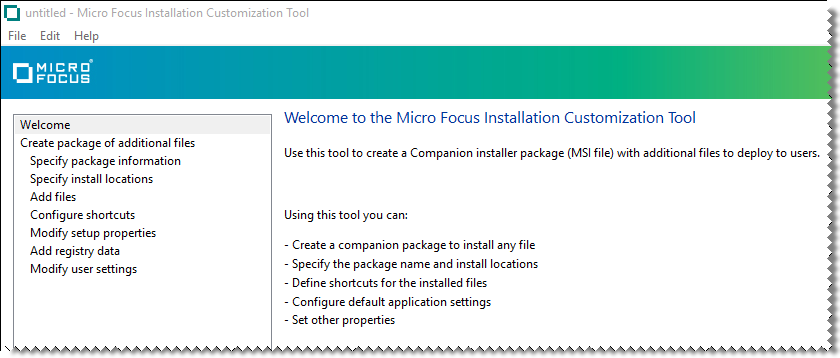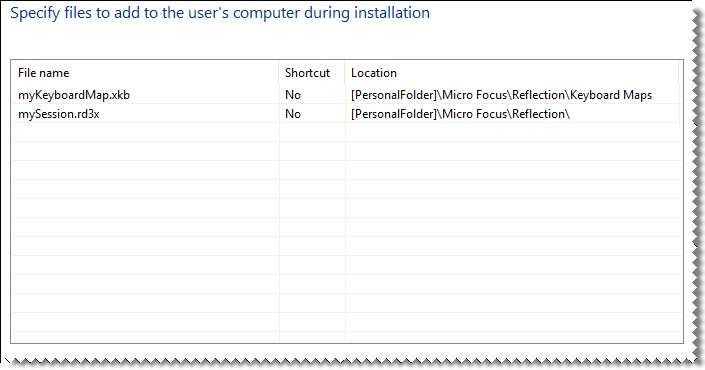 previous
previous
 next
next
The following example shows how to create and deploy a companion installer package to install a keyboard map file and a session document file.
To create a companion installer package MSI file that includes configuration files
Make sure you know where the files you want to add are located. For this example, we are packaging the files in the following locations:
|
Add this file |
In this directory |
|---|---|
|
mySession.rd3x |
C:\Users\yourUserName\Documents\Micro Focus\Reflection |
|
myKeyboardMap.xkb |
C:\Users\yourUserName\Documents\Micro Focus\Reflection\Keyboard Maps |
|
|
On your administrative workstation, open the Installation Customization Tool from a desktop shortcut or from a command line as follows:
path_to_setup\setup.exe /admin
In the Select Customization dialog box, choose .
The Installation Customization Tool opens in the mode used to create companion installer packages.

From the ICT navigation pane, click Specify install locations. Then, under Installation type, .
NOTE:For this example, we’ll deploy to an individual user. You can also choose to deploy to all users of the device.
In the Navigation pane, select .
in the list, select [PersonalFolder]. Then type in:
\Micro Focus\Reflection\Keyboard Maps
When you are done, the list entry is:
[PersonalFolder]\Micro Focus\Reflection\Keyboard Maps
NOTE:When deploying the files to all users, you will need to use [CommonAppDataFolder ] instead of [PersonalFolder].
Click . Then browse to the configuration file (myKeyboardMap.xkb) and click .
Repeat steps 6 and 7 to add the mySession.rd3x file to the [PersonalFolder]\Micro Focus\Reflection location.
NOTE:Be sure to specify the correct location for each file you add. Reflection looks for configuration files in specific locations. To find the correct file locations for any type of file see Customized Files and Where to Deploy Them.
When you are finished adding files, the panel should look similar to the following:

From the navigation pane, click .
In the box, enter the name for the package that you want to appear in the Windows list.
In the box, enter the name of your department.
From the File menu, save the package as an .msi file on the administrative installation point.